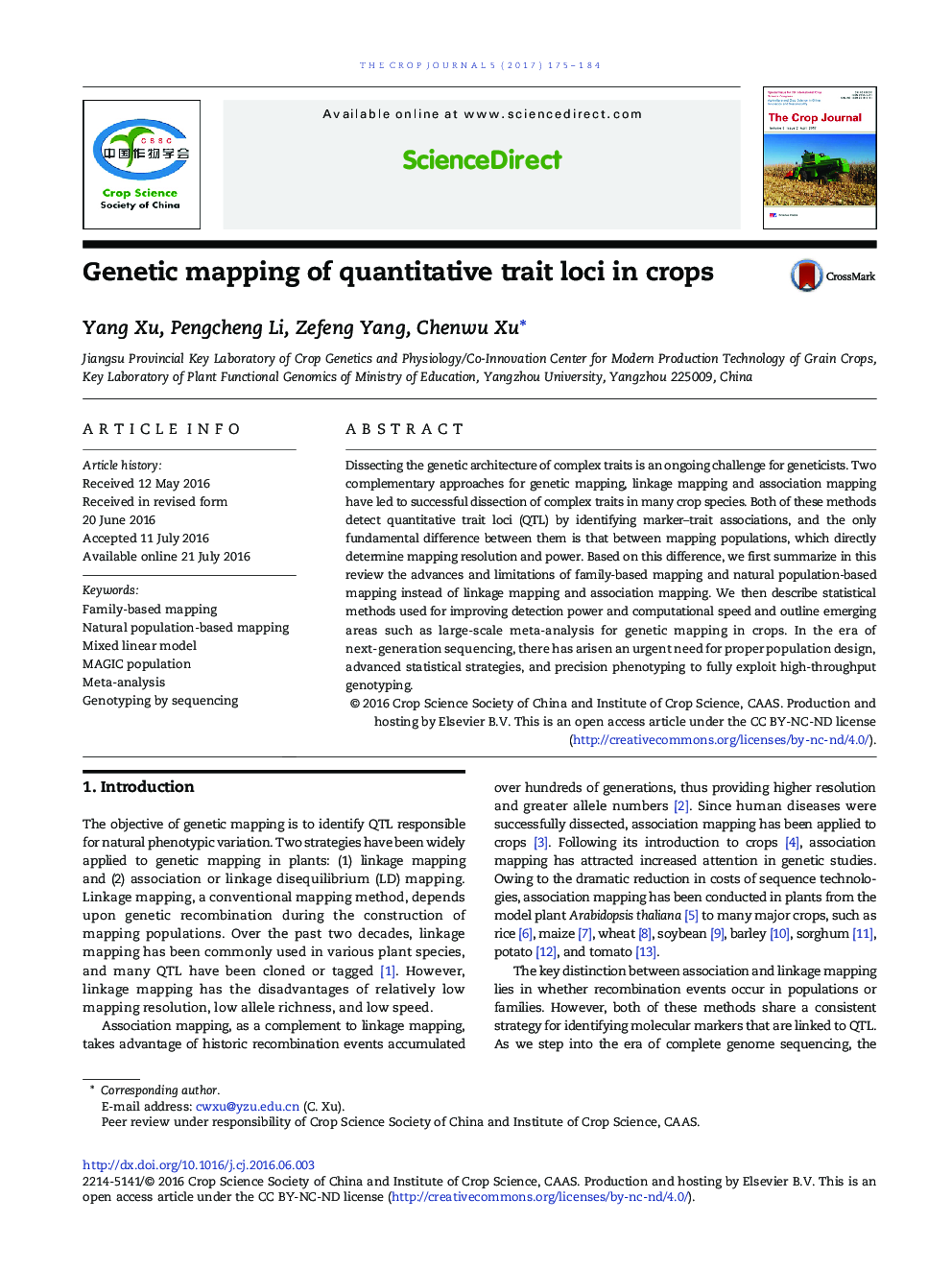| Article ID | Journal | Published Year | Pages | File Type |
|---|---|---|---|---|
| 5520820 | The Crop Journal | 2017 | 10 Pages |
Dissecting the genetic architecture of complex traits is an ongoing challenge for geneticists. Two complementary approaches for genetic mapping, linkage mapping and association mapping have led to successful dissection of complex traits in many crop species. Both of these methods detect quantitative trait loci (QTL) by identifying marker-trait associations, and the only fundamental difference between them is that between mapping populations, which directly determine mapping resolution and power. Based on this difference, we first summarize in this review the advances and limitations of family-based mapping and natural population-based mapping instead of linkage mapping and association mapping. We then describe statistical methods used for improving detection power and computational speed and outline emerging areas such as large-scale meta-analysis for genetic mapping in crops. In the era of next-generation sequencing, there has arisen an urgent need for proper population design, advanced statistical strategies, and precision phenotyping to fully exploit high-throughput genotyping.
